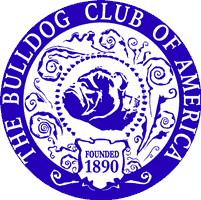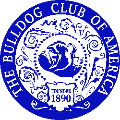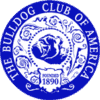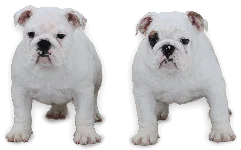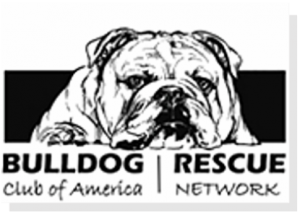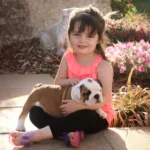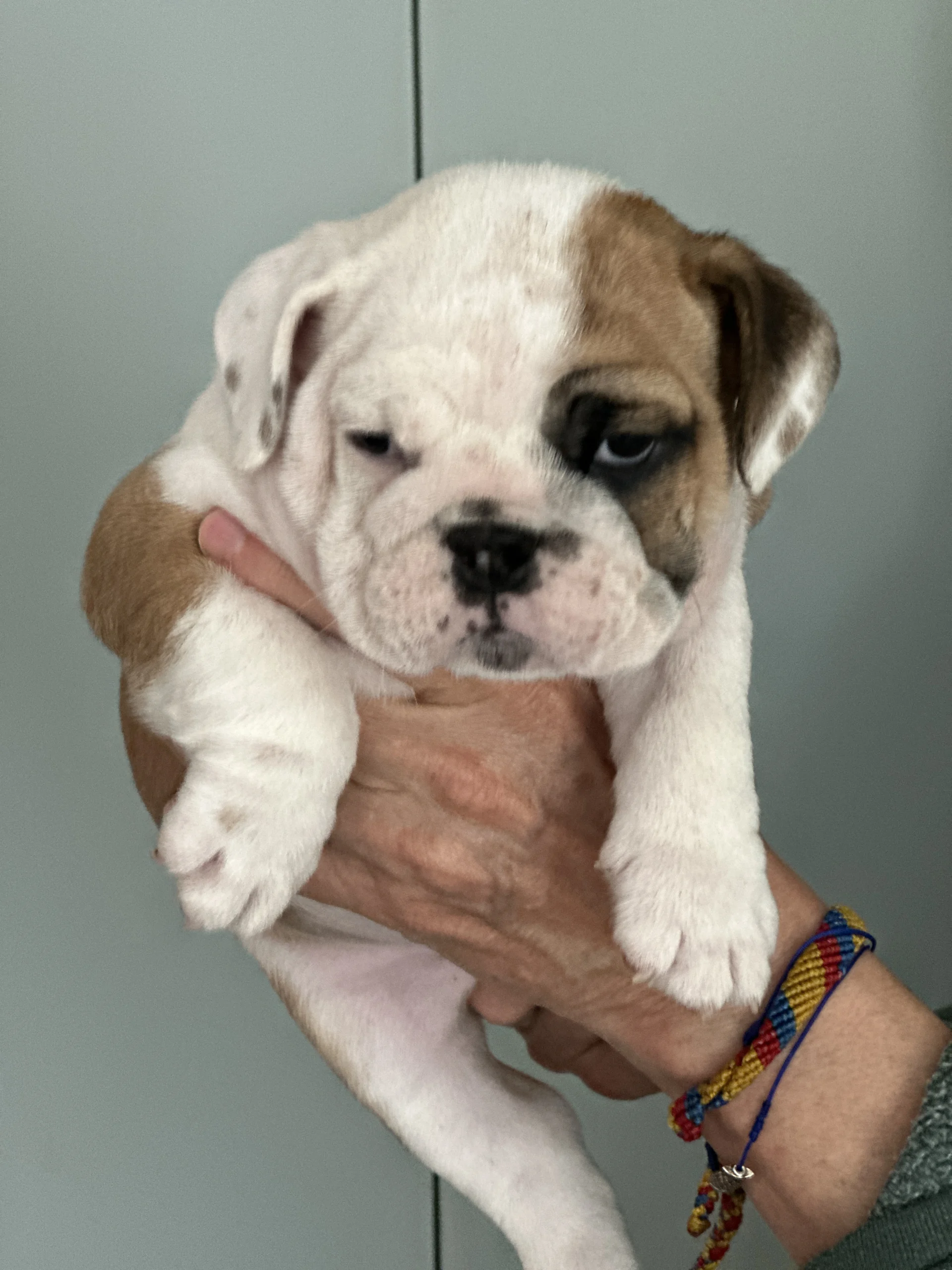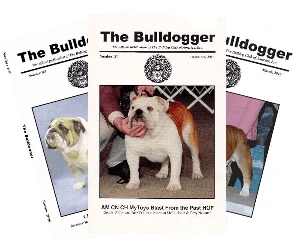The Bulldog Standard
"The style and carriage are peculiar, his gait being a loose-jointed, shuffling, sidewise motion, giving the characteristic "roll." The action must, however, be unrestrained, free and vigorous."
This disease affects rapidly growing puppies between the ages of four and 12 months. This defect in the cartilage covering the head of the long bones usually affects the shoulder joints. The signs are gradual lameness and pain upon flexing the joint. Confinement to reduce potential strain on the cartilage and encourage healing is the preferred treatment. Pain pills should be avoided since it encourages the dog to be more active. In severe cases, surgery can remove the damaged cartilage.
Panosteitis, also called "wandering lameness," occurs in puppies between five months and one year old. The cause is unknown. It exhibits itself by pain and lameness shifting from one location to another over time. Since there is no known cause, treatment consists of pain relief. Dogs tend to recover fully from mild cases on their own. In severe cases, full muscle strength may never be regained.
Bulldogs are a dysplastic breed, compared to more athletic dogs. The Bulldog Standard calls for the dog's movement to be ". . . peculiar, his gait being a loose-jointed, shuffling, sidewise motion, giving the characteristic "roll". The action must be, however, be unrestrained, free and vigorous." Bulldog hip sockets are shallower and the head of the femur does not fits as well in the socket on average as in most other breeds. It is this looseness that contributes to the characteristic roll seen in the breed. However, a healthy bulldog should not be a cripple. As the standard requires, the dog should be able to move vigorously and freely with being restrained by the peculiarity of his construction.
A cruciate ligament injury can occur in dogs for several reasons. Sometimes, it is simply the result of an athletic injury in a healthy dog. Landing “wrong” when running or jumping could cause this. Overweight or obese dogs are more prone to this type if injury, since their extra weight may cause weakened joints. Additionally, some dog breeds are predisposed to cruciate ligament injuries. While cruciate rupture cannot always be prevented, keeping your dog at a healthy weight and providing plenty of exercise (not too strenuous) can minimize the risk.
Sudden lameness in a rear leg is often the first sign of injury. If the injury remains unaddressed, arthritic changes can begin quite quickly, causing long-term lameness and discomfort. If your dog shows signs of pain or lameness, it is best to have your vet do an exam within a couple of days.
Your vet will perform an orthopedic examination, trying to isolate the pain to a specific area and ruling out injury to the foot, hock or hip. A manual examination or x-rays can usually define the cause of the limping.
While most dogs with cruciate injuries require surgery, a small number will improve with conservative treatment: several weeks of cage rest with short walks for elimination needs. A knee brace or anti-inflammatory medication may be used. If the injury is not severe cage rest may be sufficient.
Severe cruciate tears will require surgery for a complete repair. However, there are different surgical approaches, each with its pros and cons. A variety of surgical approaches are possible. Which is best for your dog should be discussed with your veterinarian. Regardless of the surgery type, a post operative resting period of eight weeks or more is crucial to the healing process. In addition, physical therapy may be recommended and can be extremely successful for long term recovery.
A dislocated kneecap can occur through injury or be inherited. Pain in the stifle, difficulty straightening the knee, and a limp are signs of this problem. Conditions created by injury may heal themselves if the dog gets enough rest. Inherited problems can be treated by surgery.
In an effort to encourage growth in a healthy puppy, some people feed vitamin supplements in addition to a fully balanced commercial dog food. These dog foods supply all the nutrients your dog requires as long as your puppy eats well. When you give your dog extra Vitamin D, calcium or phosphorus, his normal growth can be harmed. Supplements may be needed for dogs who are poor eaters . Consult your Vet before giving your puppy supplements.
